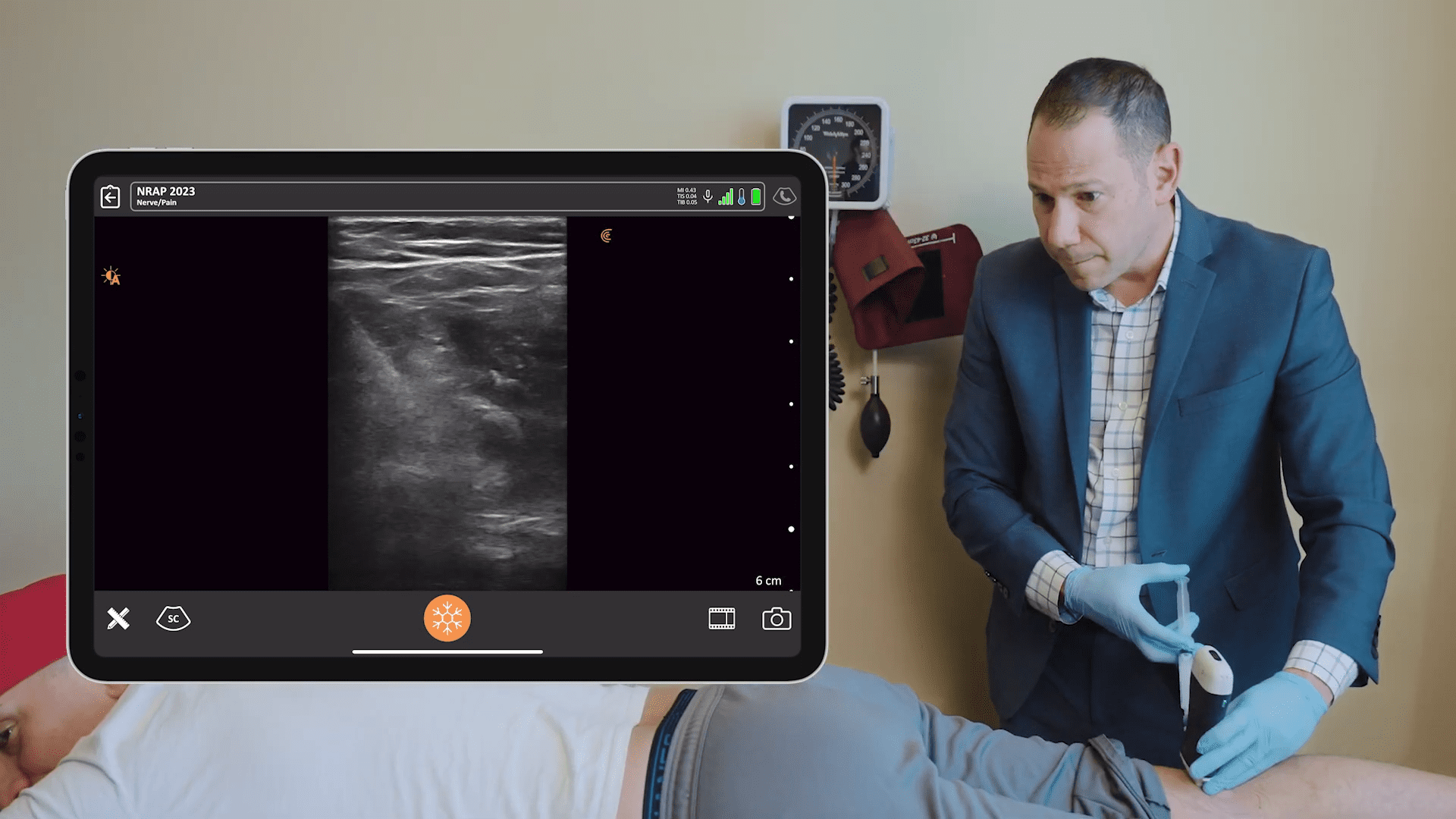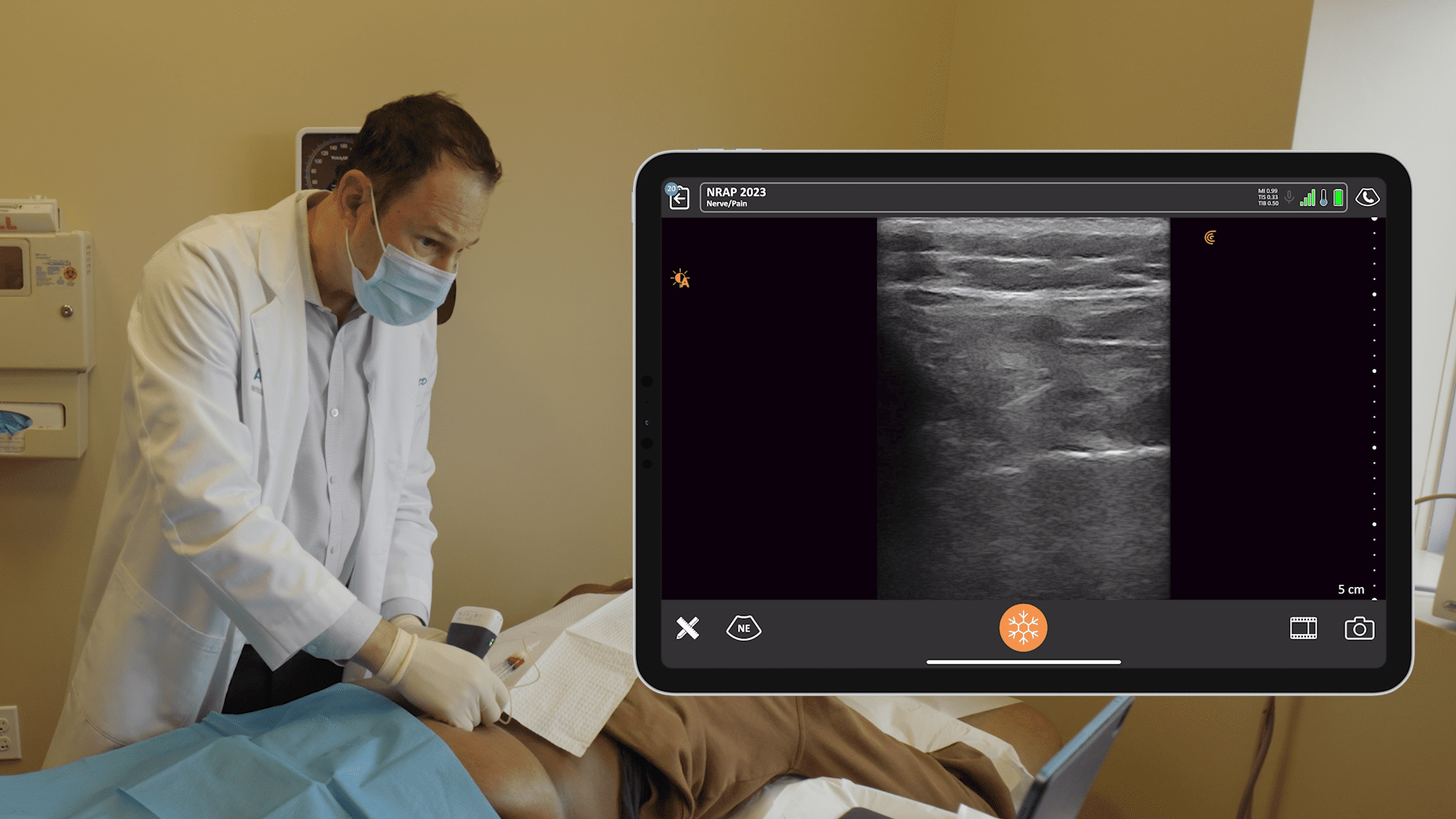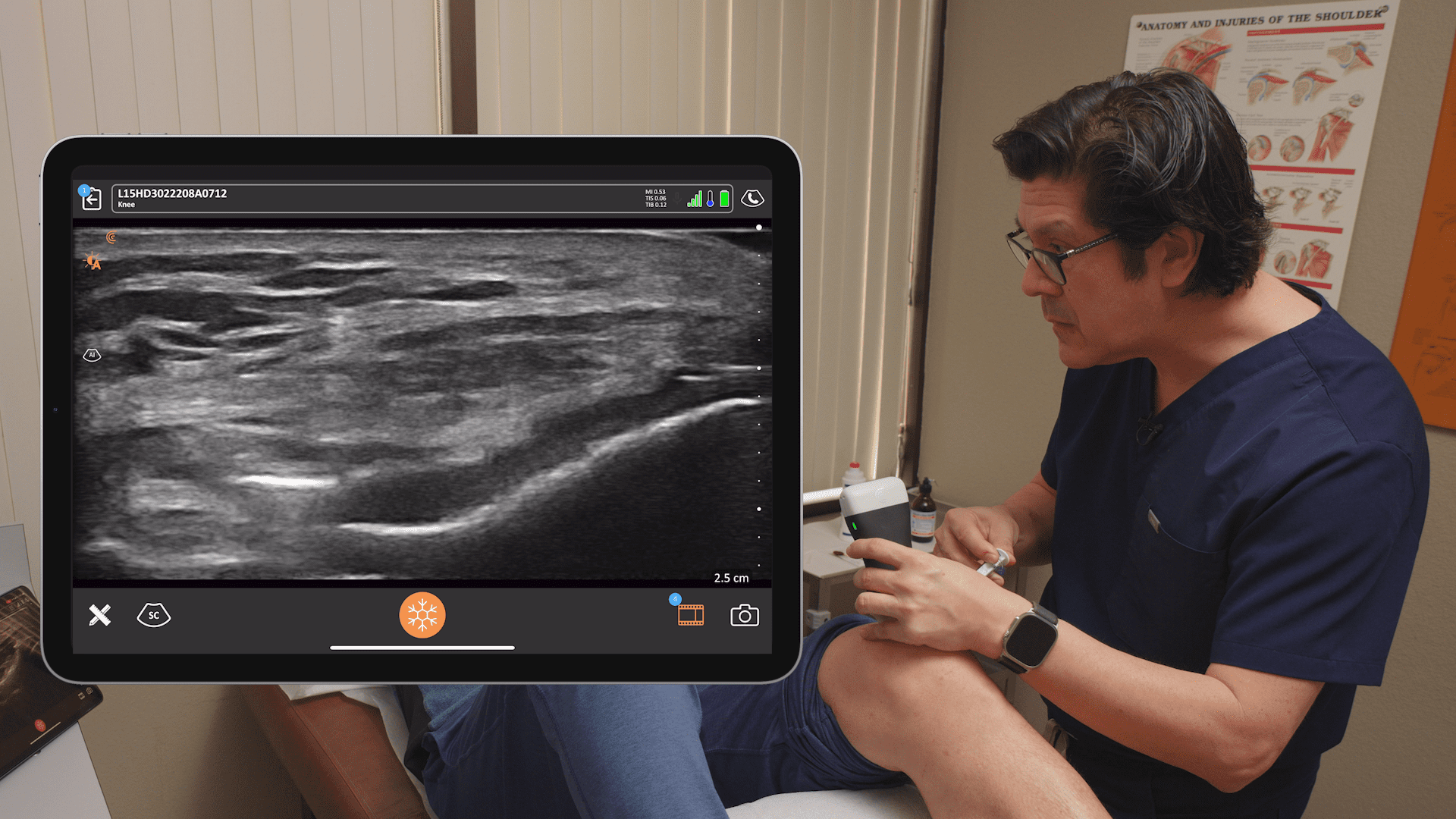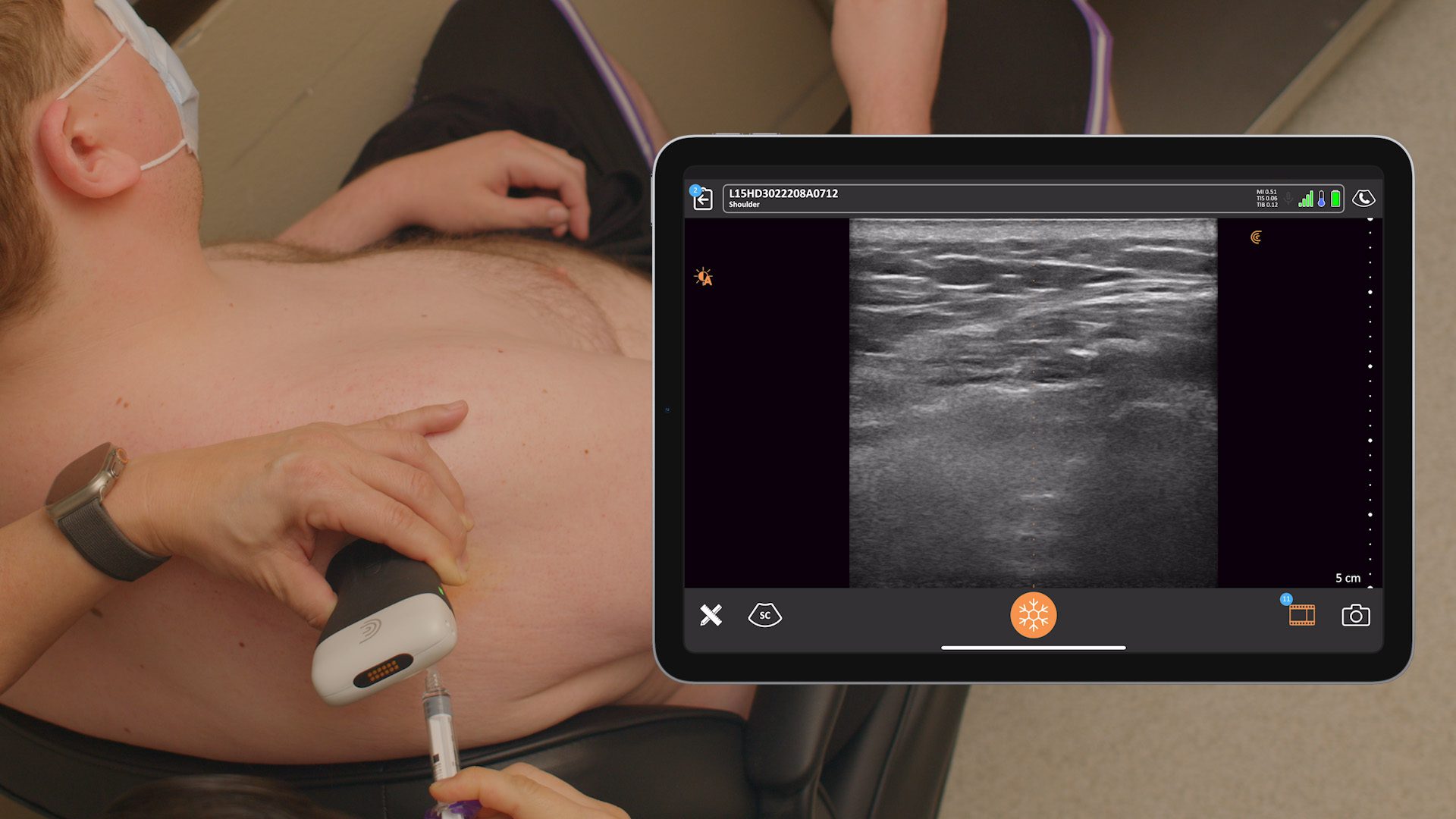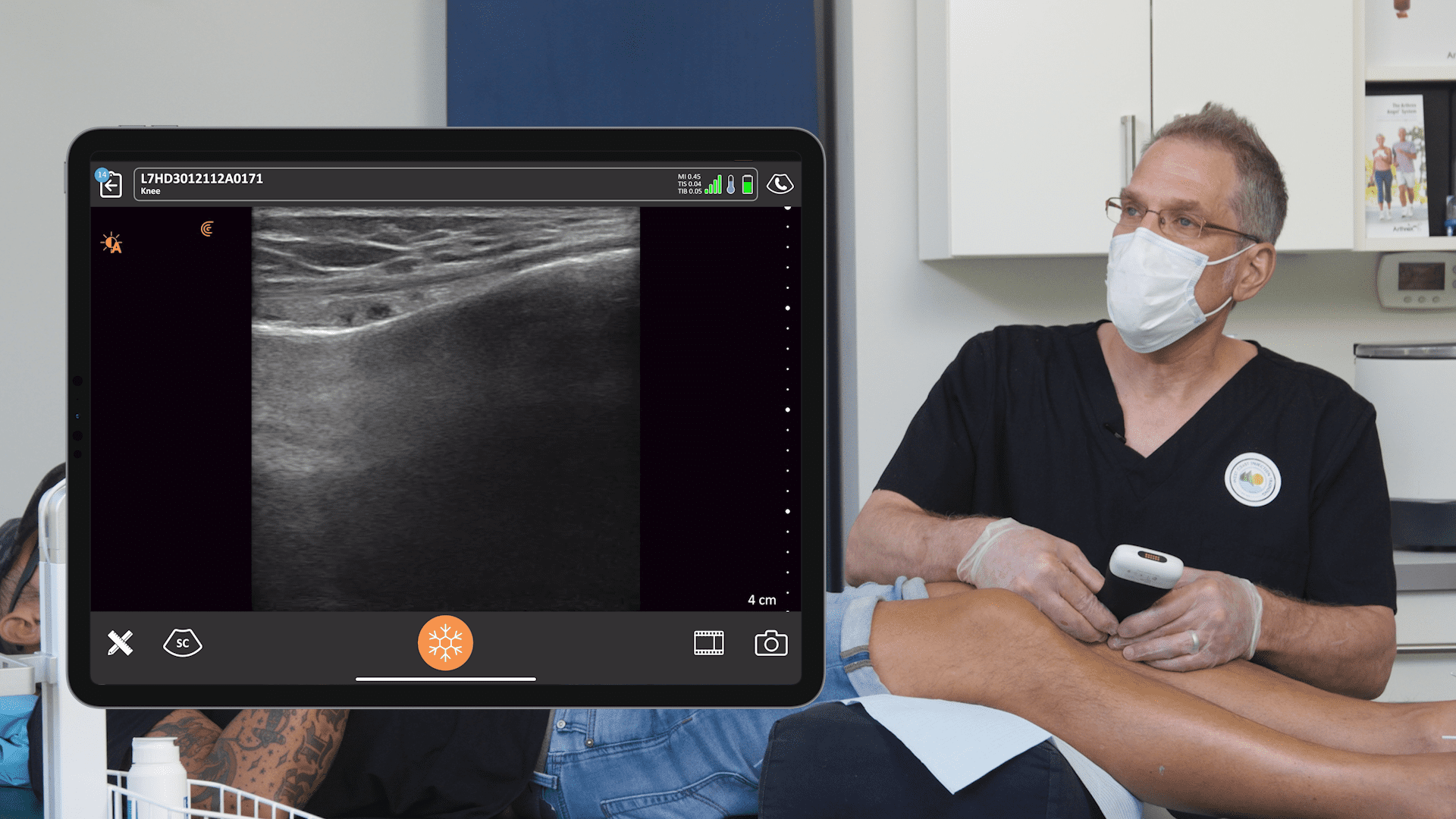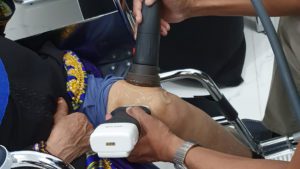Dr. David Rosenblum, the Director of Pain Management at Maimonides Medical Center in New York, recently demonstrated three pain management procedures during a live webinar hosted by Clarius. Here we present a case where he treated a patient for Plantar Fasciitis with commentary from his presentation and videos of the procedures captured at Dr. Rosenblum’s clinic.
The Challenges of Blind Injections
Earlier this week, I saw a patient who presented with post-vasectomy pain. He told me that his urologist gave him a general branch of the general femoral nerve block after his surgery for the post-operative pain. The urologist stuck him many times and gave a large volume of local anesthesia. The patient said the procedure hurt him more than it helped.
When I do a procedure on this patient, I guarantee I’ll use ultrasound and I will not need many needle passes or as much volume of medication. That’s a big benefit of ultrasound. The following case highlights the versatility of working with ultrasound in the field of pain management.
Case 1: Treating Plantar Fasciitis with PRP Injections
Patient Background
This case is about a 61-year-old female patient with multiple comorbidities. I’ve been working with her for a long time as she’s the epitome of a chronic pain patient and has come to me for multiple pain problems over the years.
This patient is a lovely woman has been on opiates. But actually, when she gets relief from my injections, she comes off the opiates. She is not a chronic opiate user. She has no addictive tendencies and the great thing about her is she responds well to the interventions and they minimize her drug use and improve her quality of life.
This case speaks to the effectiveness of a multi-modal approach. We don’t have to turn these patients away just because they’re on opiates. Opiates aren’t the only option for everyone. Often, physicians feel like they don’t know what else to do. So, patients end up with these prescriptions and then they’re turned away because opiates show up on their prescription record. They’re just seeking relief. In this case, the patient is truly the ideal opiate candidate – she uses it when she needs it and stops when she doesn’t.
This patient is a nurse. She understands the risks of steroids, especially for someone who has been in pain for so long. She came to me for chronic neck, low back pain and headaches. I treated her with ultrasound-guided PRP injections into the facet joints in her neck, which gave her major relief.
When this patient returned, presenting with foot pain in the planter fasciitis, she asked me for PRP injections, since she had responded well from injections in the neck and sacroiliac joint. She had been to the podiatrist for orthotics and steroid shots, which both failed.
A Review of Foot Anatomy
This is the anatomy of the foot and heel. You have a plantar fascia at the bottom the fat pad, the tarsal tunnel, which is like the carpal tunnel of the foot. The tibial nerve runs through it with the blood vessels and tendons and there’s the medial malleolus. Plantar fascia is often accompanied by a heel spur.
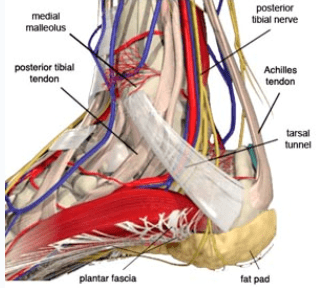
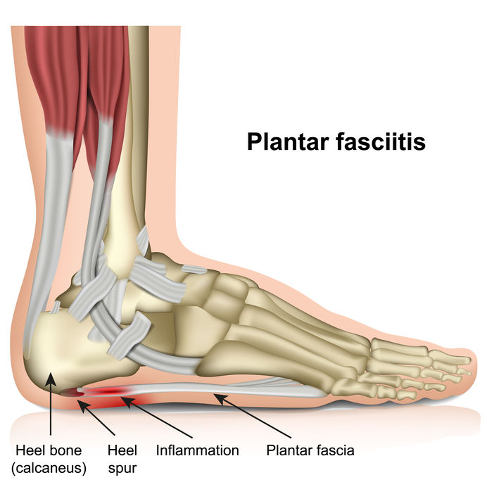
The area in red is the fascia, which is the tender area that’s typically inflamed. It’s one of the most common causes of heel pain. It’s most common amongst 40 to 50-year-old patients with two to one female to male preponderance on pathology. There are microscopic tears of the facia. There’s a mix of inflammation fibrosis or degeneration of collagen tissue.
Watch the video to see images of the plantar fascia under ultrasound guidance and the full procedure. Dr. Rosenblum prepares the patient with a tibial nerve block to lessen the pain of injecting into her inflamed foot.
Dr. Rosenblum uses the Clarius L7 high frequency wireless ultrasound scanner for his practice, which he says works well for all of his ultrasound-guided pain management procedures, shallow and deep. He has been using Clarius since 2017.
A prolific educator, Dr. Rosenblum hosts the Pain Exam Podcast and created a Pain Exam Board Review, which has helped over 3,000 pain management physicians become board certified.
Visit the Pain Exam website to register for his upcoming CME-certified Ultrasound Guided Interventional Pain and Regional Anesthesia Virtual Training on Sunday, December 6th (10AM – 2:30PM Eastern). Use the code CLARIUS2020 to receive a 30% discount!
To learn more about how Clarius HD is used to guide injections, visit our wireless ultrasound for pain management page or watch the full recording of our recent webinar «Bullseye – Why Ultrasound is the Standard for Guiding Injections» featuring double black belt pain management expert Dr. Rosenblum.





